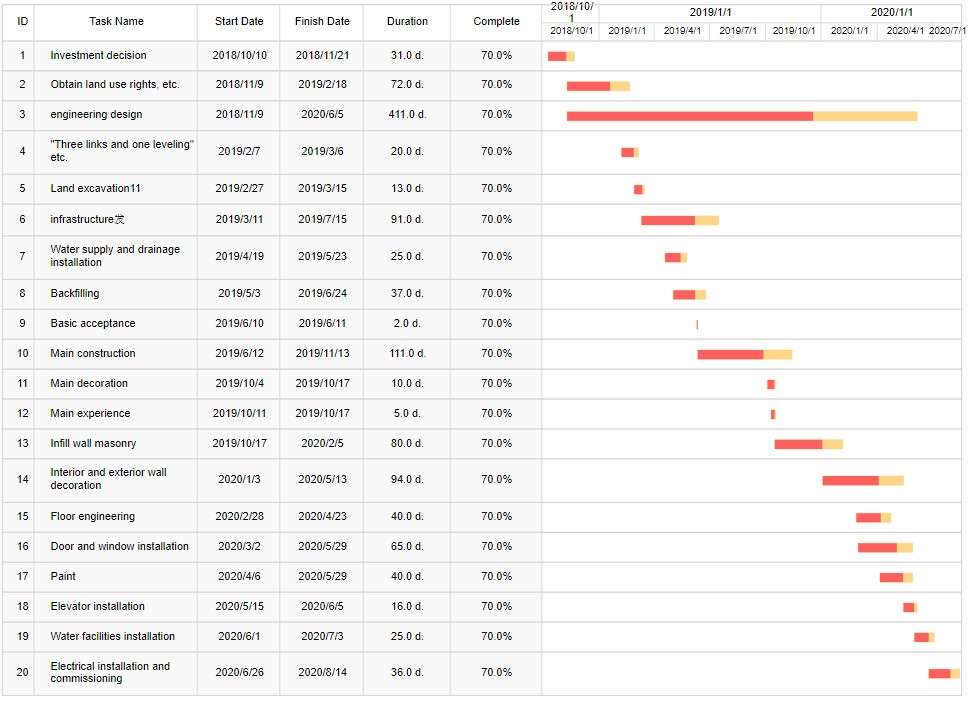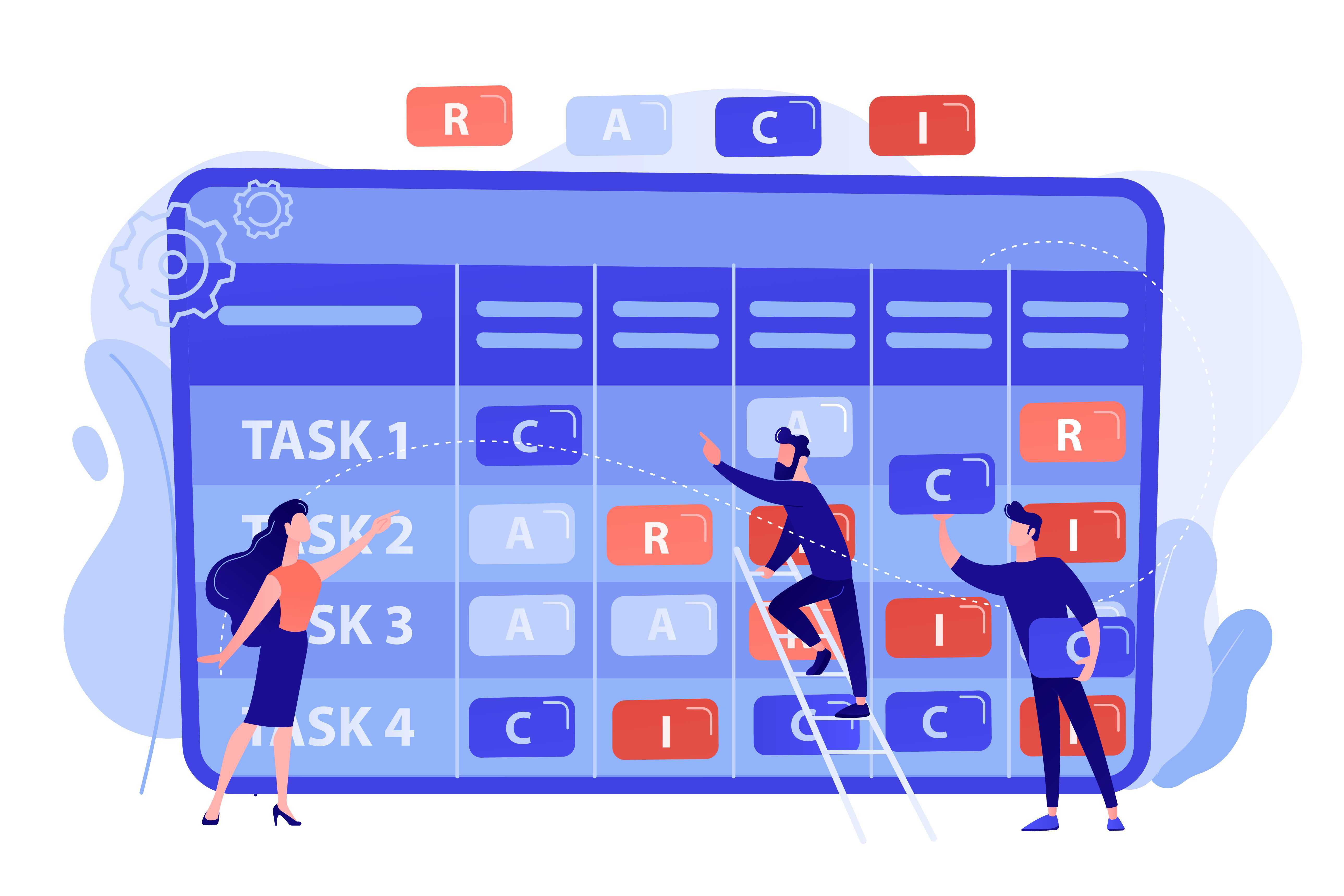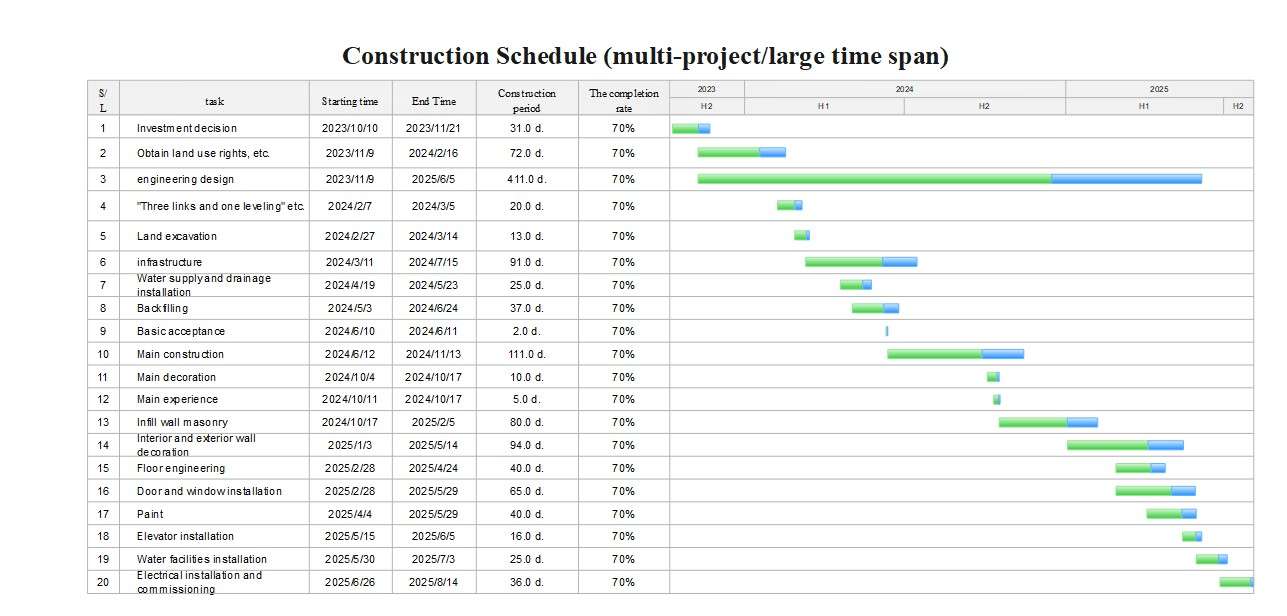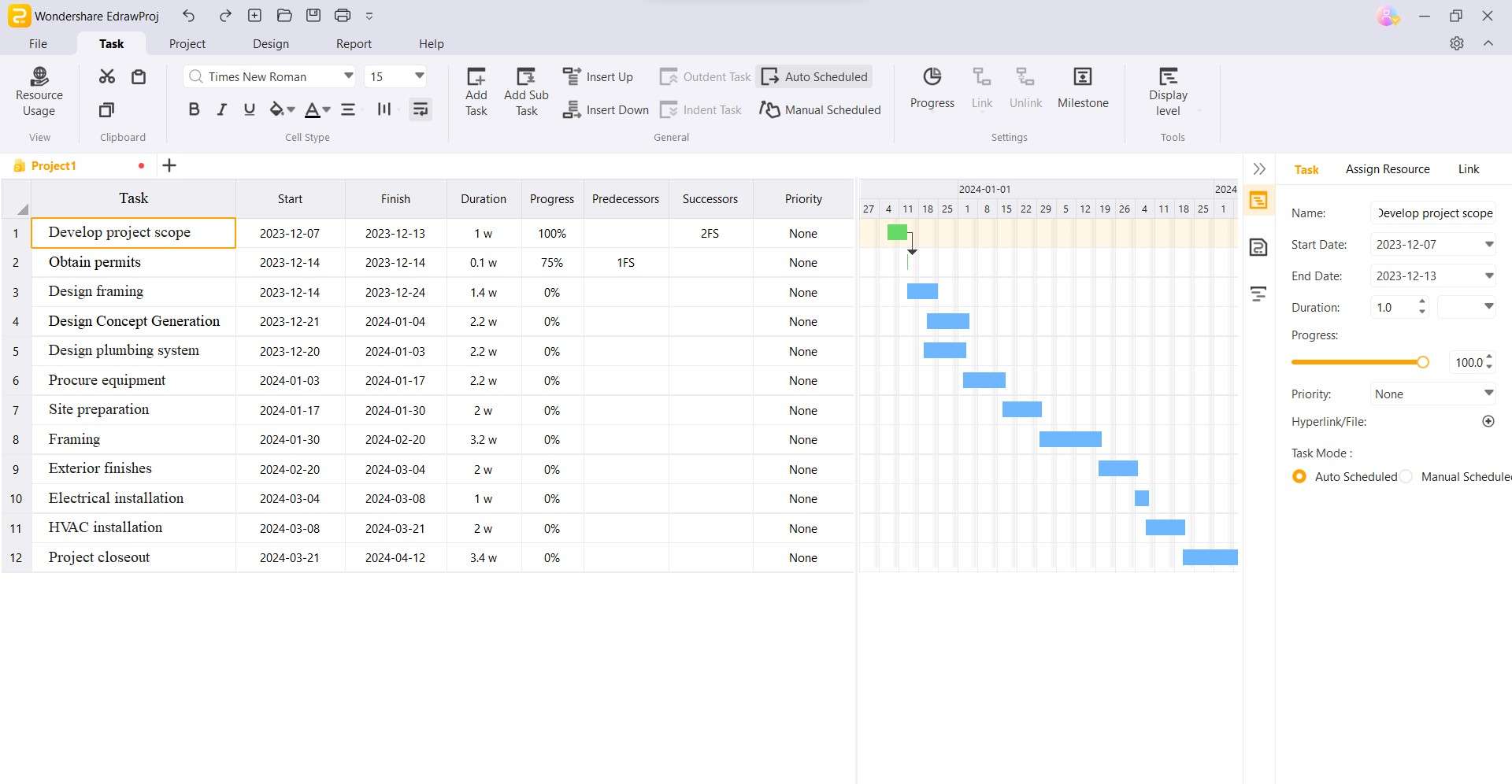
Picture this: you're starting a new construction project. You've got the blueprints, the materials, and the crew. But how do you make sure everything runs smoothly from start to finish? That's where a construction work programme comes in. It lays out all the tasks, their order, and how long they should take. This helps you stay on track, avoid delays, and keep the budget in check.
Creating one involves understanding the project scope, resources, and challenges. To help you build a solid foundation before you start your project, keep reading. This article explores construction work programmes, emphasizing their uses and importance. By the end of this guide, you'll learn how to create one using a construction work programme sample.
What Is a Construction Programme?
A construction work program, also known as a programme of works (POW), outlines the entire construction process from start to finish. It includes the sequence of activities, resources, and the timeline for each project phase. The goal of a construction plan is to ensure that the project is completed on time, within budget, and to a high standard of quality.
Here's a breakdown of the key elements to include in a construction work programme:
Project Overview
- Project Name and Description
- Client and Contractor Information
- Project Location and Scope of Work
- Project Objectives and Success Criteria
Project Schedule
- Breakdown of Work Phases and Milestones
- Detailed Task Breakdown with Estimated Durations
- Interdependencies between Tasks
- Gantt Chart of the Schedule
Resource Allocation
- Labor Requirements by Task and Phase
- Material and Equipment Requirements
- Subcontractor and Supplier Contracts
- Resource Availability and Scheduling

Cost Estimates
- Breakdown of Project Costs by Phase and Task
- Subcontractor and Supplier Costs
- Contingency Plan for Unforeseen Expenses
Quality Control and Assurance
- Quality Standards and Specifications
- Inspection and Testing Procedures
- Quality Assurance Documentation
- Roles and Responsibilities for Quality Control
A project manager or a construction planner typically develops a construction work program. It is usually created in the early stages of a project before any work has begun. The programme is then updated regularly as the project progresses. They work closely with estimators, engineers, and surveyors to gain expertise.
What Are Construction Work Programmes Used For?
Being a project manager, you know construction tasks can be complex and demanding. A construction work programme transforms a complex project into achievable tasks with allocated resources and completion dates. This roadmap keeps project managers on track, preventing delays and ensuring budget adherence. Here's how they work for you:
Planning and Scheduling
You create a construction work programme to plan and schedule construction projects. This plan identifies tasks, resources, and timelines for each project phase. It creates a detailed construction work schedule for timely and budget-compliant completion.
Communication
A construction work schedule streamlines collaboration among all stakeholders – clients, contractors, and subcontractors. With everyone on the same page, you can lead the project to successful delivery. This transparency fosters better collaboration and reduces the risk of misunderstandings.

Resource Allocation
With construction programmes, you ensure the right resources go to the right tasks at the right time. It includes human resources like labor and material resources like equipment and supplies. Strategic resource allocation helps you steer clear of bottlenecks and delays.
Monitoring and Control
You leverage the construction work programme to monitor progress and address potential issues. This proactive approach helps keep your project on track, preventing delays and cost overruns.
Why Is a Construction Programme Important?
Construction work programmes play a crucial role in streamlining the construction process. The structured approach helps to cut inefficiencies and maximize productivity. As a result, it reduces wasted time and effort, making the project process more efficient. Here are other reasons why construction programmes are important:
Reduced Risk of Delays and Cost Overruns
Construction work schedules help you manage risks affecting the project's timeline and budget. By addressing these risks early on, you can reduce the chances of delays and cost increases.

Performance Measurement
Key Performance Indicators (KPIs) are crucial for measuring the success of a construction project. The KPIs help project managers see how well the project is doing.
Quality Management
A detailed construction work programme provides a clear framework for contractual compliance. It ensures all parties involved follow the agreed-upon scope of work, timelines, and resource allocation. This attention to detail helps to prevent defects, rework, and costly mistakes.
How To Create a Construction Programme?
Creating a comprehensive construction plan is crucial for the success of any project. Here's a step-by-step guide on how to make a construction work program:
Step 1: Gather Project Information
Collect all relevant project details, including the scope, budget, and schedule constraints. This information will provide a solid foundation for developing the construction schedule.
Step 2: Make a Work Breakdown Structure (WBS)
Divide the project into smaller, more manageable tasks. This hierarchical structure helps visualize the project's scope and identify dependencies between activities.
Step 3: Estimate Task Durations
Figure out how long each project task will take to complete. Consider factors such as resource availability, complexity, and historical data from similar projects. Use expert judgment, experience, and industry benchmarks to arrive at realistic estimates.
Step 4: Identify Task Dependencies
Find out which tasks must be completed before others can start. It will help to ensure the completion of activities in the correct order.
Step 5: Create a Gantt Chart
Make a visual representation of the construction work schedule. The Gantt chart should show the start and end dates and any dependencies between tasks. It is a valuable tool for communicating the project schedule to stakeholders.
Step 6: Assign Resources
Decide who will do each task and what equipment and materials will be needed. It includes labor, equipment, and materials.

Step 7: Review and Update the Programme
Assess and improve the construction project plan to reflect real-time project developments. It may involve adjusting task durations, adding or removing tasks, or reallocating resources.
Sample of a Construction Programme

To better understand how a construction work programme works, check the sample above. This multi-project construction work schedule shows the timeline of each task on a Gantt chart. The visual representation helps you see how far along each project is.
Also, the current completion rate is 70%, indicating significant progress. But, there are still pending tasks to complete. This visual aid helps you adjust for optimal project management.
Use Software To Manage Your Construction Programme
One widely utilized tool for creating a construction work programme is a Gantt chart maker. Gantt charts visually show the duration and dependencies of project tasks. It helps project managers to plan, track, and communicate project progress. When selecting a Gantt chart maker, consider the following factors:
- Ease of Use
Choose software with a user-friendly interface and intuitive design for efficient project management.
- Scalability
Ensure the Gantt chart maker can handle projects of varying sizes and complexities. Adaptability ensures that your Gantt chart maker can grow alongside your project portfolio.
- Budget
Gantt chart makers range in price. Determine the budget that aligns with your project requirements.
- Advance Features
Look for features like resource management, progress tracking, and reporting capabilities.
EdrawProj: A Versatile Gantt Chart Maker for Construction Projects
EdrawProj is a powerful Gantt chart maker with features tailored for construction professionals. It has a user-friendly interface and ability to handle large-scale projects. EdrawProj is an ideal choice for managing small to complex construction work schedules.

- Task Management
Create detailed task schedules and break down projects into manageable subtasks. EdrawProj also lets you set task dependencies.
- Resource Management
Track the time and effort required for each task and assign resources accordingly. It helps you avoid bottlenecks and ensure that your team is working efficiently.
- Progress Tracking
Update task progress, track milestones, and identify delayed tasks.
- Project Reporting
Generate reports that provide insights into your project's progress and performance. It includes task completion rates, cost details, remaining work hours, and resource allocation.
Conclusion
Ready to start your construction project? Kick off with a plan that's sure to lead you to success. A clear construction work programme will help you avoid costly delays and keep your project on budget.
To make creating a construction work schedule easier, consider using EdrawProj. This Gantt chart maker is easy to use and lets you visualize your project timeline effectively. You can make adjustments as needed and create professional-looking Gantt charts in minutes. With EdrawProj, your project stays on track from start to finish.
A professional Gantt chart tool to plan, manage and track your projects, process and resources.



